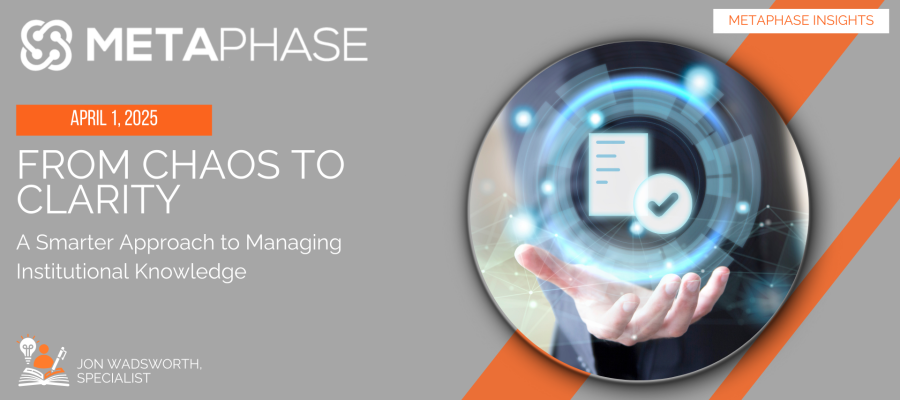
"What if your organization’s policy library wasn’t a scattered mess, but a single, searchable, always-up-to-date knowledge hub?"
For many organizations, knowledge management is an ongoing struggle. Policies, procedures, and institutional knowledge live across multiple platforms—some buried in shared drives, others trapped in email chains, and many locked within siloed content management systems. The result? Inefficiencies, version control issues, and an inability to quickly find critical information when it’s needed most.
Centralizing knowledge into an accessible, structured, and collaborative system isn’t just about organization—it’s about improving decision-making, streamlining workflows, and reducing duplication of effort. By rethinking how information is stored, edited, and distributed, organizations can move from a fragmented knowledge ecosystem to a unified source of truth.
Breaking Down the Knowledge Silos
The root of knowledge chaos lies in disconnected systems. Employees often rely on a mix of document repositories, real-time collaboration tools, and outdated policy libraries that don’t communicate with each other. This leads to multiple versions of the same document floating around, outdated policies being referenced, and knowledge gaps that slow down operations.
A modern knowledge management strategy connects these systems into a seamless workflow, where:
- Documents are created and edited collaboratively in familiar, easy-to-use platforms.
- Version control ensures everyone is working from the latest approved policies.
- Publishing and distribution are automated, reducing manual effort and human error.
- Users can search for and access the most relevant knowledge quickly and intuitively.
Bridging the Gap Between Collaboration and Governance
A key challenge in institutional knowledge management is balancing flexibility and control. Organizations need collaborative tools that allow employees to create and refine content in real time while also enforcing governance structures that maintain accuracy, compliance, and approval processes.
A successful approach integrates:
- Real-time Editing & Collaboration – Allowing teams to co-author documents and provide feedback in a structured way.
- Automated Review & Approval Workflows – Ensuring content is vetted and approved before being published.
- Seamless Publishing & Distribution – Pushing finalized knowledge assets to an enterprise-wide repository, making them accessible when and where they’re needed.
- Searchable & Structured Access – Tagging, categorization, and metadata management to ensure findability and relevance.
From Fractured to Unified: Real-World Use Cases
Consider an organization with a fractured policy repository, where various departments maintain separate versions of critical guidance. When a new regulation is introduced, different teams interpret and update documents independently, leading to conflicting versions and compliance risks.
By implementing a structured knowledge management approach, the organization can:
- Centralize storage in a unified system while allowing teams to edit collaboratively.
- Automate notifications when updates are needed, ensuring content stays current.
- Maintain an approval process that guarantees accuracy before policies are published.
- Provide employees with a single, intuitive platform to access the latest information.
Taking the First Step Toward Smarter Knowledge Management
Organizations ready to move from chaos to clarity should focus on:
- Assessing Their Current Knowledge Landscape – Identifying gaps, redundancies, and inefficiencies in how institutional knowledge is managed.
- Selecting the Right Integration Approach – Ensuring document collaboration and knowledge management platforms work together seamlessly.
- Establishing Governance & Automation – Defining workflows that maintain accuracy without creating unnecessary bureaucracy.
- Driving Adoption with Change Management – Ensuring employees understand and embrace the new system, making it the go-to resource for knowledge.
A well-structured knowledge management strategy isn’t just about reducing clutter—it’s about empowering employees with the right information at the right time, improving organizational agility, and ensuring knowledge serves as a force multiplier rather than a bottleneck.

